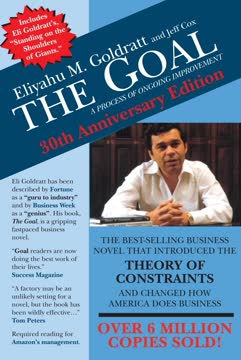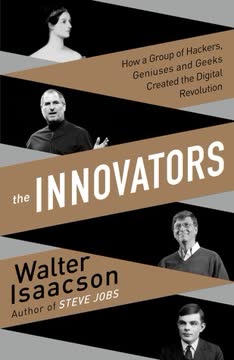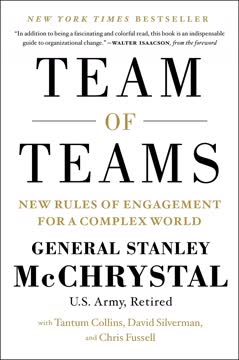Key Takeaways
1. Embrace the performer's mindset to overcome fears and silence critics
"You are the writer, director, and star of your own life."
Reframe performance anxiety. Instead of viewing public speaking as a threat, see it as an opportunity to share your unique perspective and create positive change. Recognize that everyone experiences nerves, but it's how you channel that energy that matters.
Silence internal and external critics. Develop resilience by focusing on your message and the value you provide, rather than obsessing over potential judgments. Remember that criticism often says more about the critic than the performer.
- Tactics for silencing critics:
- Redirect negative self-talk into positive affirmations
- Visualize successful outcomes
- Prepare thoroughly to build confidence
- Surround yourself with supportive people
2. Identify your authentic voice and play the right roles in every situation
"Finding your voice isn't necessarily a matter of adding things. It's certainly not about becoming someone else."
Discover your true voice. Reflect on your values, experiences, and passions to uncover what makes you unique. Your authentic voice emerges when you speak from a place of genuine conviction and purpose.
Adapt roles authentically. Recognize that you can play different roles in various situations while remaining true to your core self. Like a skilled actor, learn to amplify aspects of your personality that serve the moment without compromising your integrity.
- Strategies for finding your voice:
- Identify your core values and beliefs
- Reflect on pivotal life experiences
- Explore topics you're passionate about
- Practice vulnerability in safe spaces
- Examples of authentic role-playing:
- The empathetic listener in a difficult conversation
- The confident leader during a team presentation
- The curious learner when networking
3. Master powerful performance principles to engage your audience
"Have a clear objective. If you're giving a speech, and you don't have a strong objective, what's the point of being there?"
Clarify your purpose. Before any performance, define your specific objective and the change you want to create in your audience. This clarity will drive your content and delivery, ensuring every element serves your goal.
Leverage key principles. Incorporate powerful techniques like "acting as if," raising the stakes, and saying "yes, and..." to create dynamic and engaging performances. These principles help you stay present, take calculated risks, and build on opportunities as they arise.
- Essential performance principles:
- Have a clear objective
- Act "as if" to embody your desired outcome
- Raise the stakes to increase engagement
- Say "yes, and..." to build momentum
- Be in the moment to respond authentically
- Choose early and often to maintain control
4. Craft captivating speeches and stories that resonate emotionally
"You don't have to be different to make a difference."
Develop a big idea. Center your speech around a compelling concept that challenges your audience's perspective and offers a transformative promise. Your big idea should be both personally meaningful and universally relevant.
Structure for impact. Organize your content using proven frameworks like problem/solution, chronological, or the three-act structure. Within this structure, weave in powerful stories that illustrate your points and create emotional connections.
- Elements of effective storytelling:
- Clear setup (given circumstances)
- Compelling conflict
- Satisfying resolution
- Relevant to your overall message
- Techniques for emotional resonance:
- Use vivid sensory details
- Create relatable characters
- Build tension and release
- Incorporate humor when appropriate
5. Develop effective rehearsal techniques for world-class performances
"Rehearsing gives you the confidence to respond to the events and reactions of the moment, knowing you can come back to where you want to go with your planned content."
Implement a comprehensive rehearsal process. Follow a structured approach that includes table reads, content mapping, blocking, improvisation, and invited rehearsals. This thorough preparation allows you to internalize your material and respond flexibly in the moment.
Refine through iteration. Use each rehearsal as an opportunity to experiment, gather feedback, and make improvements. Be willing to revise your content and delivery based on what you discover through the rehearsal process.
- Seven-step rehearsal protocol:
- Table reads
- Content mapping
- Blocking
- Improvisation and rewriting
- Invited rehearsal
- Open rehearsal
- Dress/tech rehearsal
- Key rehearsal focus areas:
- Vocal variety and pacing
- Body language and gestures
- Transitions between sections
- Handling potential disruptions
6. Produce powerful openings, closings, and audience interactions
"The closing of your speech or presentation might even be more important than the opening."
Craft a compelling opening. Start strong by immediately engaging your audience with a provocative question, surprising statistic, or captivating story. Avoid clichés and establish your credibility quickly.
Design a memorable closing. End with impact by reinforcing your key message, issuing a clear call to action, or leaving the audience with a thought-provoking idea. Ensure your closing ties back to your opening for a sense of cohesion.
- Effective audience interaction techniques:
- Ask thought-provoking questions
- Conduct quick polls or surveys
- Facilitate small group discussions
- Incorporate physical movement
- Use props or visual aids
- Tips for managing Q&A sessions:
- Anticipate likely questions
- Listen carefully and paraphrase
- Address the whole audience, not just the questioner
- Have strategies for handling difficult questions
7. Improvise skillfully to connect with even the toughest crowds
"Improv is a mindset and trained ability useful for seizing opportunities as well as overcoming difficult situations and tough crowds with grace and class."
Develop improvisational skills. Practice techniques like "yes, and..." to stay flexible and build on unexpected opportunities. Improvisation allows you to respond authentically to your audience and handle challenging situations with confidence.
Create intimate moments. Use improvisation to foster genuine connections with your audience. Be willing to go off-script when appropriate to acknowledge the present moment and demonstrate your attentiveness to the room.
- Improv exercises to practice:
- Story-story game
- Gibberish game
- Tell-me-a-secret game
- Whiteboard challenge
- Benefits of improvisation:
- Increases adaptability
- Enhances active listening
- Builds confidence in uncertain situations
- Fosters creativity and spontaneity
8. Implement five keys to deliver a show-stealing performance every time
"Owning the room involves projecting competence and a real command to give your audience confidence, using your physical presence to manage the live experience, and provoking the audience with manageable risks that pay off without going too far or seeming out of control."
Master the five keys. Implement a comprehensive approach to your performances that includes a pre-show ritual, developing stage awareness, owning the room, creating intimate moments, and managing the post-show cycle. This holistic strategy ensures you're prepared for every aspect of your performance.
Continually refine your craft. After each performance, reflect on what worked well and identify areas for improvement. Use this analysis to inform your future preparations and continually elevate your skills as a performer.
- Five keys to a show-stealing performance:
- Pre-show ritual
- Developing stage awareness
- Owning the room
- Creating intimate moments
- Managing the post-show cycle
- Post-performance analysis:
- Gather feedback from trusted sources
- Review video/audio recordings when possible
- Identify specific moments for improvement
- Celebrate your successes and growth
Last updated:
FAQ
What's Steal the Show about?
- Focus on Performance: Steal the Show by Michael Port emphasizes that everyone is a performer in various aspects of life, from job interviews to public speaking.
- Acting Techniques for Non-Actors: The book draws on acting principles to help non-actors find their voice, overcome fears, and deliver compelling performances.
- Practical Strategies: It provides practical strategies and techniques for crafting speeches, telling stories, and engaging audiences effectively.
Why should I read Steal the Show?
- Overcome Performance Anxiety: If you struggle with public speaking or performance anxiety, this book offers methods to crush those fears and silence internal critics.
- Enhance Communication Skills: The book is designed for anyone looking to improve their communication skills, whether in business or personal settings.
- Transformative Techniques: Readers will learn transformative techniques that can be applied in various situations, from job interviews to leading meetings.
What are the key takeaways of Steal the Show?
- The Performer’s Mindset: Adopting a performer’s mindset involves finding your voice, playing the right role, and embracing authenticity.
- Powerful Performance Principles: The book outlines six powerful performance principles, including having a clear objective and acting "as if."
- Mastering Public Speaking: Port provides a master class in public speaking, covering how to craft captivating pitches and tell engaging stories.
What specific methods does Michael Port recommend in Steal the Show?
- Acting "As If": This technique encourages individuals to adopt the mindset and behaviors of someone who is confident and successful.
- Raise the Stakes: Emphasizes taking smart risks that can lead to greater rewards, encouraging stepping out of comfort zones.
- Say "Yes, and...": Fosters creativity and collaboration by building on others' ideas and maintaining a positive flow in conversations.
How can I find my voice according to Steal the Show?
- Embrace Authenticity: Finding your voice involves embracing your unique strengths and being true to yourself.
- Reflect on Experiences: Reflecting on personal experiences helps identify what matters most and how to express it authentically.
- Practice and Rehearse: The more you prepare and perform, the more comfortable and confident you will become in expressing yourself.
What are the best quotes from Steal the Show and what do they mean?
- "All the world’s a stage." Highlights the idea that life is a series of performances, and we all play different roles.
- "You can’t perform your way into universal job protection." Emphasizes that merely going through the motions in your career is not enough.
- "The show never goes on when you say no." Underscores the importance of embracing opportunities and being open to new experiences.
How does Steal the Show help with public speaking?
- Crafting Captivating Content: Provides strategies for crafting engaging speeches and presentations, focusing on storytelling and audience connection.
- Rehearsal Techniques: Outlines effective rehearsal techniques that help speakers prepare for their performances.
- Audience Engagement: Teaches how to engage audiences through various techniques, including humor and interactive elements.
What is the "Performer’s Mindset" in Steal the Show?
- Finding Your Role: Involves recognizing the various roles you play in life and choosing the most appropriate one for each situation.
- Overcoming Fear: Emphasizes the importance of overcoming fears and silencing critics, both internal and external.
- Embracing Opportunities: Encourages individuals to see every opportunity as a chance to perform and connect with others.
How can I apply the principles from Steal the Show in my daily life?
- Practice Active Listening: Enhances communication and helps build stronger relationships.
- Take Smart Risks: Apply the principle of raising the stakes by taking calculated risks in your personal and professional life.
- Use the "Yes, and..." Technique: Encourages a positive mindset and helps you build on others' ideas.
What are the common mistakes people make in public speaking, according to Steal the Show?
- Lack of Preparation: Failing to prepare adequately for a performance is a common mistake.
- Ignoring Audience Engagement: Not engaging the audience effectively can lead to a disconnection.
- Overemphasis on Perfection: Focusing too much on delivering a perfect performance can lead to anxiety and self-doubt.
What role does improvisation play in Steal the Show?
- Adaptability: Improvisation is a key skill for adapting to unexpected situations during a performance.
- Enhancing Engagement: Using improv techniques can make the presentation more relevant and engaging for the audience.
- Building Connection: Improv helps build a connection with the audience by fostering spontaneity and authenticity.
What are some tips for closing a presentation effectively from Steal the Show?
- End Strong: The closing of a presentation is crucial and should leave a lasting impression.
- Avoid Apologies: Do not apologize for running out of time, as it can diminish the impact of the presentation.
- Encourage Audience Participation: Engaging the audience in a final activity or call to action can enhance the closing moment.
Review Summary
Steal the Show receives mostly positive reviews for its practical advice on public speaking and performance. Readers appreciate Port's actor's perspective and find the book helpful for improving presentations, speeches, and general communication skills. Many praise the book's structure, content organization, and actionable tips. Some criticize the promotional aspects and find certain sections less relevant. Overall, reviewers recommend the book for both novice and experienced speakers, noting its value in developing confidence and authenticity in various professional and personal situations.
Similar Books










Download PDF
Download EPUB
.epub digital book format is ideal for reading ebooks on phones, tablets, and e-readers.




